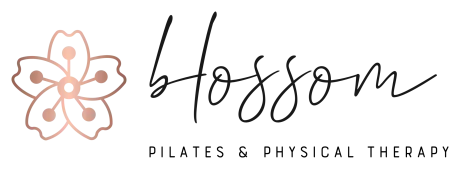
Breathing is important for a few different reasons. First and foremost, when working with a new client, I want to teach a breath pattern that will help them regulate their internal abdominal pressure (IAP). This is important because organ prolapse, incontinence, hernias, etc. are associated with increased abdominal pressure. I choose breath patterns to support and teach a healthy IAP to begin.
One quick tip to begin to work on improving your own IAP is to “exhale on exertion” in your workouts and to avoid holding your breath during lifting heavy objects in your everyday life.
Once IAP is well controlled, breath can be manipulated to make exercises harder or easier, to assist in finding a spinal position, or increase a stretch. For example, in the basic exercises called “Footwork” on the reformer (these are a series of squats or plies) I usually suggest that clients begin with exhaling to rise from the squat and inhaling to lower down. This is the way I would teach someone to sit to stand from a chair, too. An exhale upon standing will assist in deep abdominal and pelvic floor contraction which should be occurring on the stand. On the sit/squat, I encourage an inhale because the pelvic floor is stretching and dropping during the lowering phase of a squat.
However, as students advance or have different goals, I may switch the breath. Inhaling on stand prepares the body for jumping, as exhale occurs on landing. Inhaling on standing may create a feeling of length and challenges the lumbo-pelvic stability while the femurs—or leg bones—are moving in the hip joint.
Although there are many different ways to cue breathe in Pilates, the most important variable and goal is in maintaining appropriate IAP both during class and during life.
If you have diagnoses of hernia, pelvic organ prolapse, or find yourself leaking urine when you jump or sneeze, Pilates may be of help to you!
